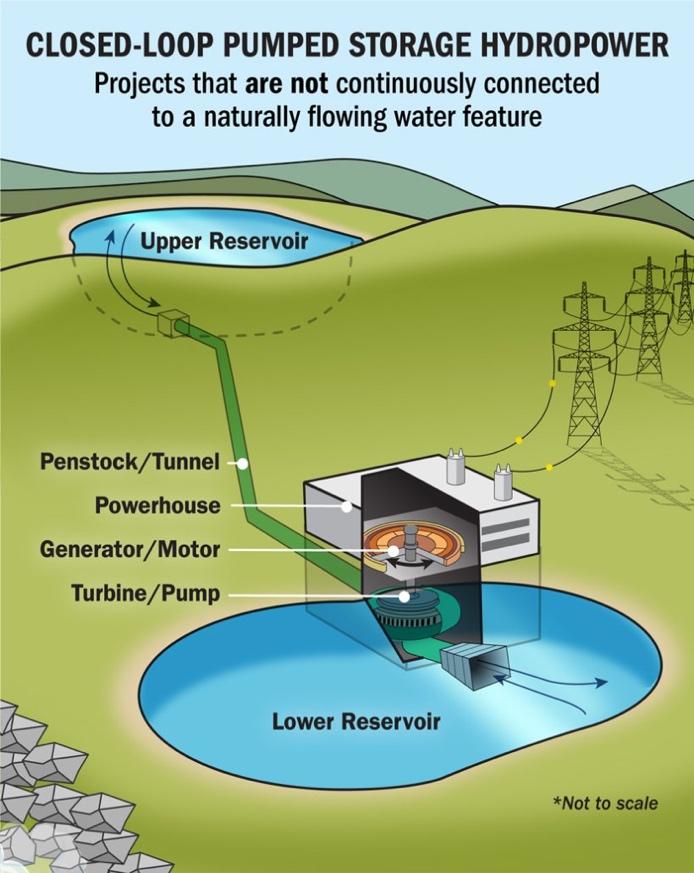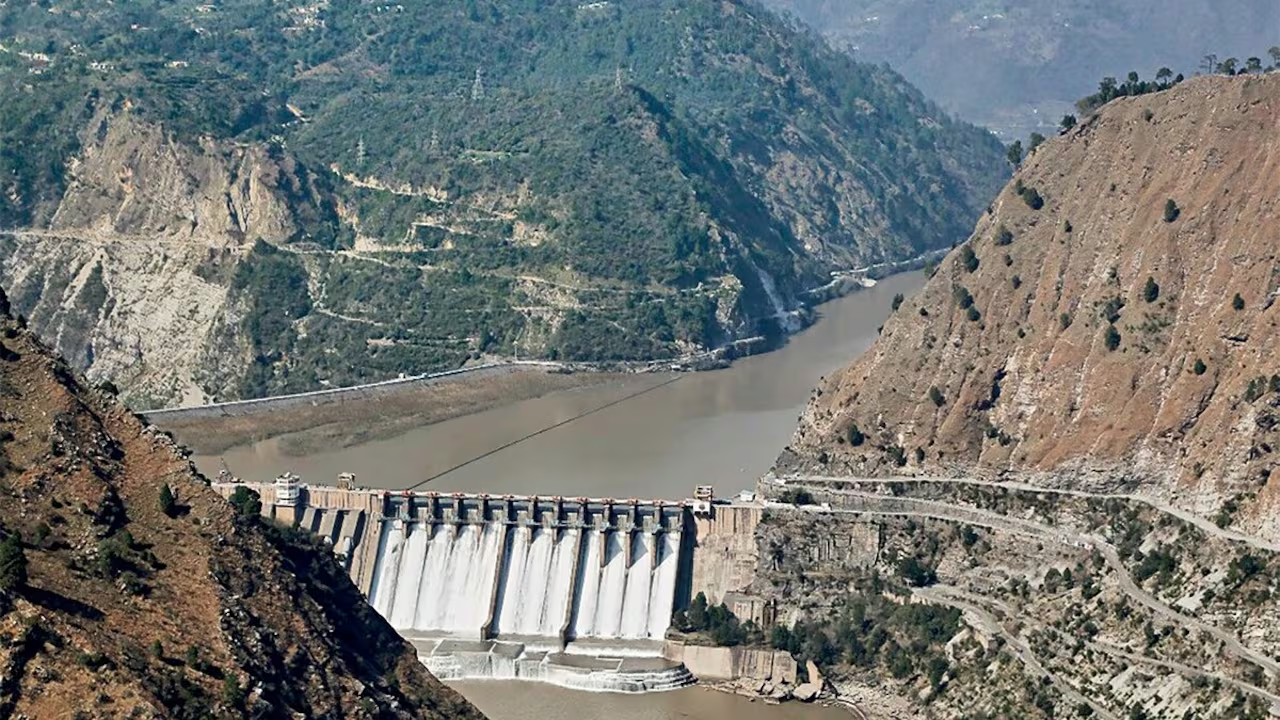- Courses
- GS Full Course 1 Year
- GS Full Course 2 Year
- GS Full Course 3 Year
- GS Full Course Till Selection
- Answer Alpha: Mains 2025 Mentorship
- MEP (Mains Enrichment Programme) Data, Facts
- Essay Target – 150+ Marks
- Online Program
- GS Recorded Course
- Polity
- Geography
- Economy
- Ancient, Medieval and Art & Culture AMAC
- Modern India, Post Independence & World History
- Environment
- Governance
- Science & Technology
- International Relations and Internal Security
- Disaster Management
- Ethics
- NCERT Current Affairs
- Indian Society and Social Issue
- NCERT- Science and Technology
- NCERT - Geography
- NCERT - Ancient History
- NCERT- World History
- NCERT Modern History
- CSAT
- 5 LAYERED ARJUNA Mentorship
- Public Administration Optional
- ABOUT US
- OUR TOPPERS
- TEST SERIES
- FREE STUDY MATERIAL
- VIDEOS
- CONTACT US
Pumped Storage Hydropower as a Renewable Powerhouse
Pumped Storage Hydropower as a Renewable Powerhouse
As India transitions towards renewable energy sources like solar and wind. There has been a greater focus on developing battery storage systems, which can store electricity. In this respect, there has been an increased focus on developing Pumped Storage Hydropower (PSH) projects, which are giant batteries.
Pumped Storage Hydropower Project
- Pumped storage plants use the principle of gravity to generate electricity using water that has been previously pumped from a lower source to an upper reservoir.
- Operation of pumped storage power plants requires 2 reservoirs: - i) upper and ii) lower reservoir.
- Water in upper reservoir is used for generating power during peak demand hours. The water in the lower reservoir is pumped back to the upper reservoir during the off-peak hours and the cycle continues.
-
Two Types of PSH plants:
- Open loop: One or both reservoirs are connected to a natural water source (e.g., a river).
- Closed loop (or off-river PSH): No connection to a natural water source and the same water is cycled between the two reservoirs for pumping and generation.
- Energy storage capacity of a pumped hydro facility depends on size of its two reservoirs and the head between reservoirs, while the amount of power generated is linked to the size of turbine.

Need for Pumped Storage Hydropower Project In India
The growing reliance on renewable energy sources in India, particularly solar and wind power, presents a unique challenge: their intermittent and variable nature.
The sun doesn't always shine, and the wind doesn't always blow, leading to fluctuations in energy generation that can strain the electrical grid. This is where Pumped Storage Hydropower (PSH) steps in as a critical solution.
- Ensuring Grid Stability and Reliability: PSH acts as a massive, rechargeable battery for the grid. During periods of excess energy generation (like sunny or windy days), surplus electricity is used to pump water uphill to an upper reservoir. When energy demand peaks or renewable generation drops, this stored water is released downhill, flowing through turbines to generate electricity. This rapid response capability helps balance the grid, stabilize frequency, and prevent blackouts, ensuring a reliable power supply even when renewable sources fluctuate.
- A Proven, Cost-Effective, and Efficient Energy Storage Solution: PSH has a long track record of success and is widely recognized as the most mature and cost-effective technology for large-scale energy storage. Unlike batteries, which are still evolving and have limitations in terms of scalability and cost, PSH offers a dependable and long-lasting solution that can store vast amounts of energy for extended periods.
- The Largest and Most Effective Energy Storage for Renewable Integration: The sheer scale of energy storage that PSH provides is unmatched by any other technology. This makes it the ideal solution for integrating large amounts of renewable energy into the grid, ensuring that clean energy is available when it's needed most.
- It offers following benefits:
- Peak shaving: PSH stores excess energy during off-peak hours and releases it during peak demand periods, reducing the need for expensive and often polluting peaking power plants.
- Load balancing: By smoothing out fluctuations in energy demand, PSH helps maintain a stable grid frequency, preventing voltage fluctuations and ensuring the reliable operation of electrical devices.
- Enhanced Grid Resilience: With its rapid response capability and black start capability (the ability to restart the grid after a blackout), PSH enhances the overall resilience of the power system.
- Long Lifespan and High Efficiency: PSH plants have long operational lifetimes and boast energy conversion rates exceeding 80%, making them a highly efficient and sustainable energy storage solution.
Status of Pumped Storage Hydropower:
- Current potential of 'on-river pumped storage' in India is 103 GW. Out of 4.76 GW of installed capacity, 3.36 GW capacity is working in pumping mode. About 44.5 GW including 34 GW off-river pumped storage hydro plants are under various stages of development.
- Currently operational PSH plants in India have a combined capacity of 3300 MW.
|
Pumped Storage Project |
Location |
States |
Capacity |
|
Nagarjunasagar |
On Krishna River |
Telangana |
705 MW |
|
Srisailam |
On Krishna River on a deep gorge on Nallamala hills. |
Telangana |
900 MW |
|
Kadamparai |
Tamil Nadu |
400 MW |
|
|
Bhira |
Near Mulshi Dam on Mula River. |
Maharashtra |
150 MW |
|
Ghatghar |
On Pravara River, a tributary of Godavari River in Ahmedanagar district |
Maharashtra |
250 MW |
|
Purulia (Panchet) |
West Bengal |
900 MW |
|
|
Total |
3300 MW |
Advantages of Pumped Storage Projects
- Environmentally Friendly: All components of PSH projects would be connected, operated and maintained in an environmentally friendly manner with no residual environmental impacts.
- Atmanirbhar Bharat (Self-Reliant India): PSPs employ indigenous technologies and domestically produced materials. Most electrical & mechanical parts of PSPs are also made in India.
- Local development: PSH projects contribute to local economies through job creation and infrastructure development.
- Longer and reliable duration of discharge: PSH projects can provide long-duration energy storage (more than 6 hours). However, Battery Energy Storage Systems are designed for up to 4 hours of discharge generally.
Challenges in the development of Pumped Storage Projects
- Environmental clearances: Obtaining environmental clearances for PSH projects can be a lengthy and complex process. However, environment impact of PSH constructed on existing reservoirs is generally less and does not lead to displacement of people.
- Free power: PSPs are energy storage projects designed to cater to the need for grid stability during peak hours. PSPs do not produce any electricity and are net consumers of electricity.
- Cost of pumping power: Cost of power from PSH project has three components - cost of storage, cost of conversion losses and cost of input power. For the commercial viability of a PSH project input power should be available at affordable tariff. However, availability of solar power at relatively cheaper rates allows affordable input power for PSP units.
- Value of peak power: Importance of PSH project lies in its capability to offer peaking power. Other services offered by PSPs like spinning reserves, reactive support, black start ability etc. which are essential for grid stability are not adequately monetized.
Government Initiatives to Promote PSH
- Utilisation of financial & project execution capabilities of CPSUs: The government has identified probable PSH sites with Central Public Sector Undertakings (CPSUs) to facilitate their development.
- Energy Storage Obligation: Distribution companies are now required to have a certain amount of energy storage capacity.
- Budgetary support: The government provides financial support for enabling infrastructure for PSH projects.
- Ease of doing business and simplification of process: For ex. Central Electricity Authority has issued revised guidelines for the preparation and approval of DPRs for Pumped Storage Hydropower projects.
Guidelines for promotion of PSPs
Allotment of project sites: State Governments may allot project sites to developers in following manner.
- On-nomination basis to CPSUs and State PSUs: Projects can be awarded directly to CPSUs/State PSUs on a nomination basis.
- Allotment through competitive bidding: PSH project may be awarded to private developers by following a two-stage competitive bidding process. PSUs can also participate in the bidding process.
- Allotment through Tariff Based Competitive Bidding (TBCB): PSH projects may be awarded on a TBCB basis to developers based on competitive bidding based on:
- Composite tariff (including cost of input power) in case input power is arranged by developer.
- Tariff for storage on a per megawatt hour basis if input power is arranged by procurer of the storage capacity.
-
Self-identified off-stream PSPs: Developers can identify potential off-stream sites for PSH projects. This will help in harnessing off-stream potential in the country at a faster pace. Since, these sites are away from riverine system and do not utilise natural resources like river streams, allotment from State Governments would not be required for PSP projects on such sites. However, all statutory clearances need to be obtained from State & Central agencies before starting construction.
Incentives for Pump Storage Projects
- States shall not charge any upfront premium for PSP project allocation.
- Exemption from free power obligation as PSPs are energy storage schemes i.e., net consumers of energy and do not produce any energy.
- No requirement for creation of a Local Area Development Fund as these projects have minimal environmental impact and have no R&R issues.
- Utilisation of discarded mines including coal mines to develop PSPs.
- Developers should start construction work within a period of 2 years from project allotment, otherwise the project allocation will be cancelled.
- Market reforms for PSH project by Appropriate Commission
- shall ensure that services which help in supporting grid stability are suitable monetized.
- Notify Peak and Off-Peak tariffs for generation to provide appropriate pricing signal to Peak and Base Load Generating plants.
- 80% power generated when PSPs operate as conventional hydropower stations during monsoon period would be offered to Home State at the rate of secondary energy fixed by CERC.
7. Green Finance: Since PSPs will be utilised for avoiding greenhouse gas emissions. Hence, PSPs will be supported through concessional climate finance. Sovereign green bonds issued for mobilizing resources for green infrastructure as a part of Government’s overall market borrowings for development of PSPs which utilise renewable energy for charging.
Conclusion
Pumped Storage Hydropower projects are a crucial component of India's transition towards a renewable energy future. By addressing the challenges and implementing the government's guidelines and incentives, India can unlock the full potential of PSH and ensure a reliable, sustainable, and affordable power supply for all.




